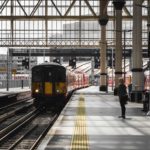 With many forced to work from home, and the amenities and events that underpin so much of our regular travel shut down, the Covid pandemic had an obvious impact on mobility patterns. Research from Aston University believes that the period may have some important lessons for society, and for the rain industry, to ensure that traveling by train becomes less stressful in the future.
With many forced to work from home, and the amenities and events that underpin so much of our regular travel shut down, the Covid pandemic had an obvious impact on mobility patterns. Research from Aston University believes that the period may have some important lessons for society, and for the rain industry, to ensure that traveling by train becomes less stressful in the future.
“The National Rail Passenger Survey produced by Transport Focus, shows that commuters are the least likely passenger group to be satisfied with their overall journey from station to train facilities, when compared to leisure and business passengers,” the researchers say.
“Opportunities to improve the crowds’ movement, along with making changes to the ticket facilities to help reduce queues, could have a positive impact on passenger satisfaction ratings, and more importantly, the safety of passengers and other users of train stations.”
The researchers looked at the flow of passengers through Birmingham New Street station both before and during the pandemic. They note that there was a general increase in passenger demand across the rail network before the pandemic.
Passenger numbers
The researchers used event-based simulation modeling to explore passenger numbers and other behaviors from a range of sources in order to evaluate three distinct scenarios: evening rush-hour travel before Covid; pre-Covid travel with fewer ticketing machines in operation, and travel during March 2020.
Perhaps unsurprisingly, the results reveal that those who had already purchased tickets electronically were fastest through the station, with those having to buy their tickets at the station having to enter queues. The resulting analysis allowed the researchers to make three recommendations to make train travel smoother.
For instance, the first suggestion is that passengers should be encouraged to buy their tickets digitally via their smartphones rather than at the ticket machines at the station itself. This would allow them a much smoother journey through the station. Indeed, the data showed that around 20% of passengers took over 15 minutes to reach their train, due in large part to difficulties getting their ticket.
Secondly, the authors urge stations to remove ticket gates entirely and instead rely on sensors that are capable of automatically scanning tickets via passengers’ smartphones. This would significantly reduce queuing times at stations. Indeed, such apps could even automatically ensure that passengers pay the lowest fare (although rail operators themselves could significantly simplify the hugely complex fare system too!).
Last, but not least, the authors advocate a one-way flow system for the main concourse of the station itself so that station operators can maintain more passenger flow control and minimize the risks of overcrowding.
“Railway passenger stations, especially in urban areas, need to have an effective railway station concourse, as well as good ticket facilities for passengers to use,” the authors conclude. “The majority of passenger rail trips are made by commuters (54%) for work and education, compared to leisure and business purposes which make up 31% and 10% respectively.